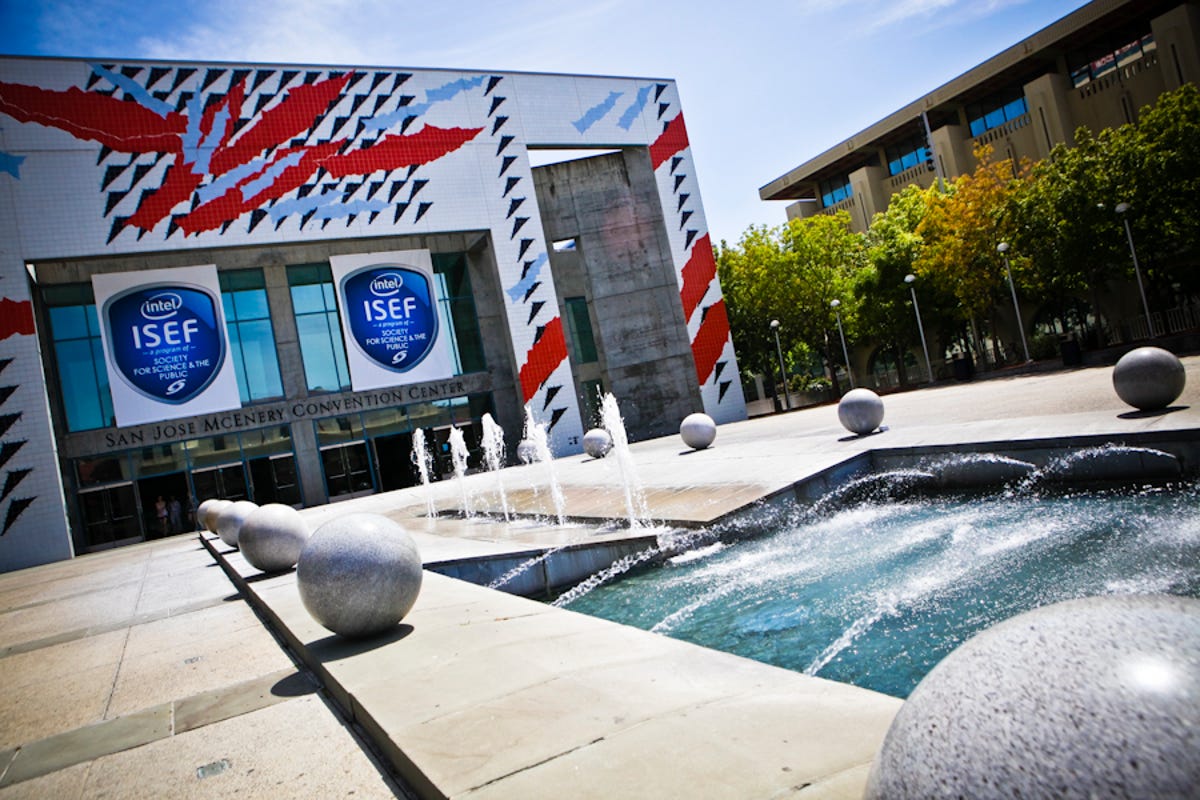Big ideas on display at Intel science fair (photos)
The next generation of innovators put their ideas on display this week at the Intel International Science and Engineering Fair.

ISEF
Entryway
Students wait
Following sessions in the morning, students were dismissed for lunch, then returned to their respective stations to wait for afternoon interviews with judges.
"Once again the Intel Science and Engineering Fair displays the remarkable creativity and ingenuity of young people from around the world," said Shelly Esque, vice president of Intel's Corporate Affairs Group.
Biofuels
Natural Oil Boom
In an interview with one of the judges during an afternoon session, students discuss their oil spill solution project, Natural Oil Boom.
Made from the abundant tropical grass Imperata cylindrica, hydrophobic and oleophilic cellulose can be an effective natural solution to cleaning up oil spills.
Alternative energy
Cleantech and sustainable power projects are among the most pressing issues globally, and there are plenty of student projects at ISEF focused on new approaches to energy.
Here, a project explores the different types of inocula on the power output of microbial batteries.
Waiting to return
Robotics
As robotics become more integrated into our culture, researchers are exploring ways to make robots more human and intelligent.
This project is exploring the concept of seeing and vision, which gives us the ability to have stereo vision and depth perception, asking whether stereo vision can be applied to robots.
Rubix Cube Solver
Wind turbines
Some projects at the fair are seeking ways to increase the efficiency of existing resources and improve the output of current infrastructure without having to invest too much money or resources into increased results.
Examining the details of wind energy, this project is taking a closer look at how we might be able to increase the energy transfer from small wind turbines.
Using a microcontroller-based system to monitor incoming power and system variables, energy to battery transfer efficiency is managed to extract the most energy from the system.
Best of category
Photovoltaics
Researching concepts to determine the impact of various enhancement methods on the power produced by solar panels, these students are searching for ways to increase yields from solar panels.
By applying lenses, reflectors, and colored filters to solar panels, they hypothesized, the amount of light and wavelength of light entering the solar panel can be controlled so that it produces better and more efficient results, resulting in greater control over the management of solar energy, and potentially receiving up to 25 percent more power.
Wing tip sails
When a wing produces lift, the pressure on its topside is lower than the pressure on its underside, shedding swirling vortices off of the wing tips, inducing drag and making the wing work harder at generating lift.
By using wing tips to push the vortices further from the wing, the drag is reduced, resulting in a lower overall energy consumption.
Energy
All's quiet
The grand awards will be announced at a ceremony on Friday. The top winner in the competition will receive the Gordon E. Moore Award--a $75,000 prize funded by the Intel Foundation.

